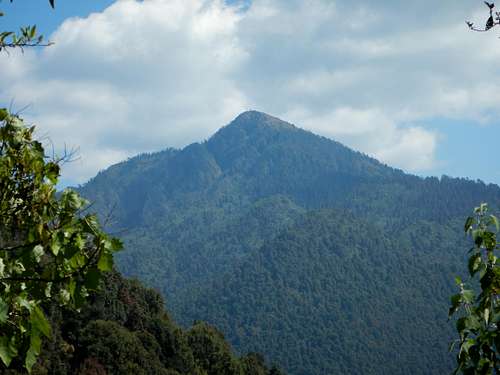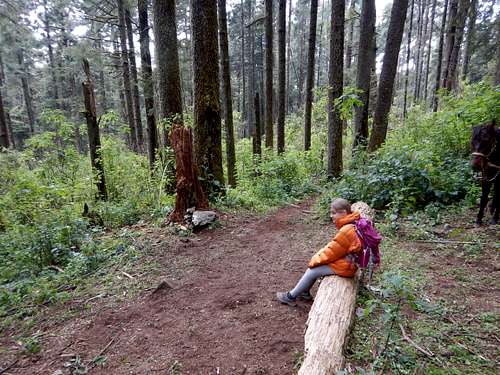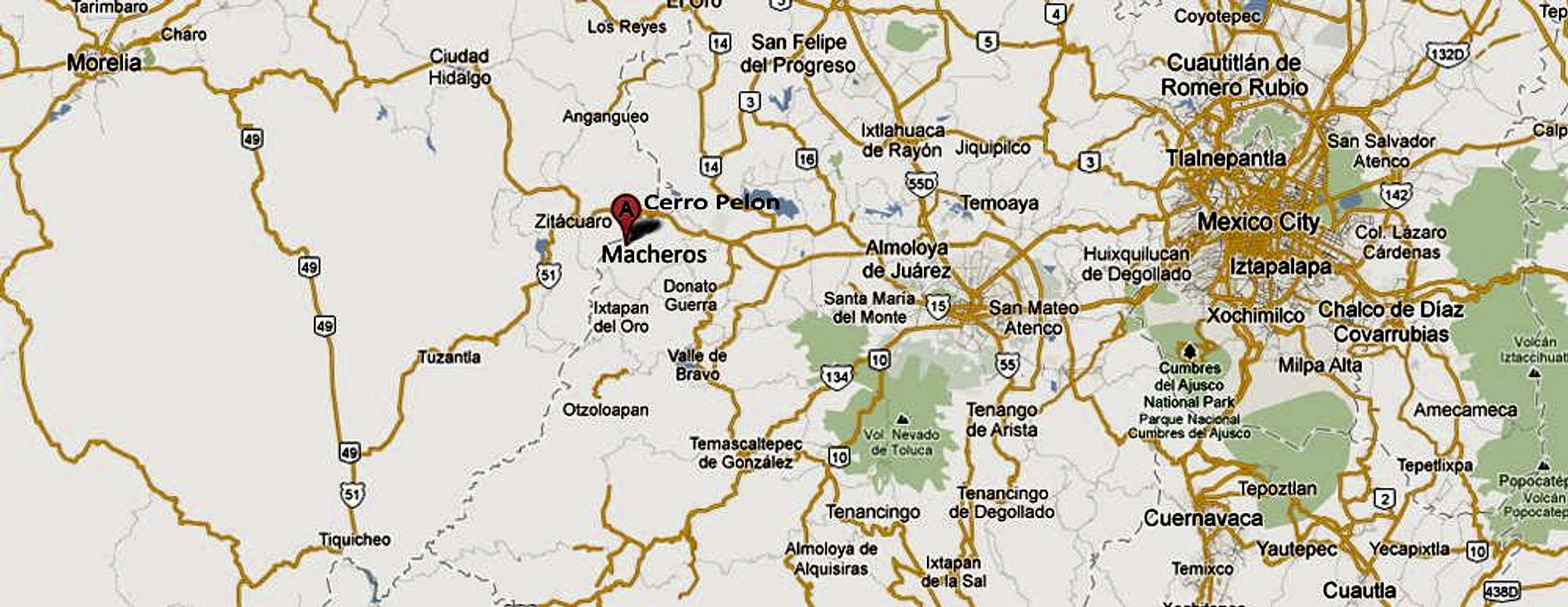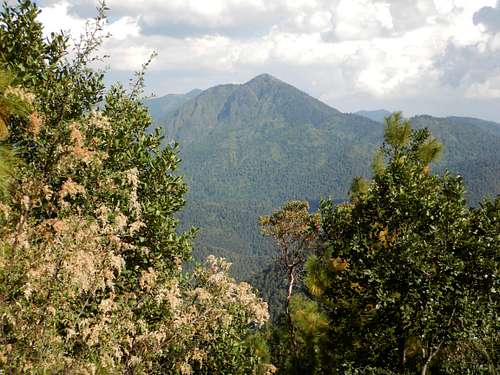|
|
Mountain/Rock |
|---|---|
|
|
19.39157°N / 100.26265°W |
|
|
Hiking, Mountaineering |
|
|
Winter |
|
|
11155 ft / 3400 m |
|
|
Overview
Cerro Pelón has become very famous in recent years due to the Cerro Pelón Butterfly Sanctuary. The mountain is an old volcano and is made of volcanic rocks. From November to March, the North American monarch butterfly migration takes place here where literally millions of butterflies gather for the winter on the slopes of Cerro Pelón. This is a site to behold for sure and is one of the world's wonders. There are so many butterflies on the mountain that when the sun shines, millions of butterflies take to the sky and it's actually quite noisy. You can't really hear one butterfly, but you can hear a "storm" made of millions of butterflies! There are so many butterflies in the trees that the tree branches sag from the weight of butterflies. The migration of the butterflies isn't fully understood, but you can read a little about the migration below: Monarch Butterfly Migration
The area around Cerro Pelón itself is much less touristy than the butterfly reserve at El Rosario. A visit to the area is high recommended. The hike to the summit is a nice one as well and the views and scenery are spectacular.
Although not that far from Mexico City (2.5 hours), this area is far removed from the hustle, bustle, crowds, and noise of the City. Macheros, the launching point for the mountain is a nice, quiet, and peaceful rural hamlet.


Getting There
Buses in Mexico is convenient, safe, inexpensive, and comfortable. Most buses run 7 days a week, year-round, including all holidays. Most people come from Mexico City and the east, but we came from the west.
From the East and Mexico City to Zitácuaro
From JM’s Butterfly Reserve B&B:
If you are coming from the Mexico City airport or elsewhere in the city, take a taxi or the metro to the Observatorio terminal, also known as Poniente (it’s at the end of the pink metro line). Buy a “directo” ticket to Zitácuaro with a company called La Linea. Their desk is across from the restaurant/snack bar area. They take credit cards. Buses leave every hour during the week and every half hour on weekends. They run from 4 am til 10 pm. The ride takes about two and a half hours. As of December 2017, a one-way ticket costs about 260 MXN.
From the West and Morelia to Zitácuaro
In Morelia, buses for Zitácuaro leave Terminal B in the center of the main bus terminal every half hour all day long with a company called Alegra. This bus is not a “directo,” so expect the ride to take at least 3 hours.
From Zitácuaro to Macheros via Taxi
When you arrive at the bus terminal in Zitácuaro, walk outside the main entrance to the queue of authorized taxis. You do not need to check in at the authorized taxi window ; they only sell tickets for transport within Zitácuaro. You need to ask the next driver in the line to take you to Macheros (pronounced Mah CHAIR os) in the State of Mexico. The fare should not be more than 300 MXN. The drive to Macheros takes about 30 minutes.
From Zitácuaro to Macheros via Public Transportation
For the budget traveler, there is also a public transportation service called a combi (a refitted VW bus) that can take you part of the way to our place. Exit the bus station and cross the street. The combis leave from the street that is to the left of the large supermarket in front of you. Take one that goes to Aputzio de Juarez get off at La Piedra. La Piedra is the on the border of the state of Mexico, where the combis are not authorized to operate. There are usually taxis waiting here if you arrive before dark: take one to Macheros from there. Note that if you are traveling solo, the taxis won’t leave until they have another fare. Also note that the taxi drivers call it a day by sunset, so plan your travels accordingly.

Route
Since you must take a guide, directions won're be provided in detail here. Most people visit the mountain slopes via horseback, but above 3100 meters so so, the rest of the mountain will be climbed on foot. Walking the entire distance is also possible. Note that most groups just visit the part of the mountain where the butterflies are, up to about 3300 meters. If you want to climb to the summit, make sure that the guides know this in advance. The views from the summit are spectacular and well worth the effort.
Red Tape
You must go with a guide in order to protect the butterflies and habitat. There is also a small fee to enter. Disturbing the the butterflies and being loud is not permitted.

When to Climb
November through March is the best time to climb. This is the dry season and since you will also want to visit the butterflies on Cerro Pelón, which are only present during this time of year.

Camping
You can camp at JM's Butterfly B&B, but most people just stay in the lodge.
Mountain Conditions
Below are the weather averages for Cumbres del Ajusco at 2990 meters/9810 feet. It will be about 5 ° F (3 ° C) cooler on the summit of Cacique.
| Month | High (° F ) | High (° C) | Low (° F ) | Low (° C) | in. Rain | mm Rain | Rain Days |
| Jan | 59 | 15 | 38 | 3 | 0.58 | 15 | 2 |
| Feb | 58 | 15 | 39 | 4 | 0.30 | 8 | 1 |
| Mar | 60 | 16 | 40 | 4 | 0.78 | 20 | 2 |
| Apr | 61 | 16 | 40 | 5 | 2.01 | 51 | 6 |
| May | 62 | 17 | 41 | 5 | 3.24 | 82 | 10 |
| Jun | 61 | 16 | 42 | 6 | 8.62 | 219 | 17 |
| Jul | 60 | 15 | 42 | 5 | 10.54 | 268 | 22 |
| Aug | 59 | 15 | 42 | 5 | 11.10 | 282 | 22 |
| Sep | 59 | 15 | 42 | 5 | 9.16 | 233 | 19 |
| Oct | 60 | 15 | 40 | 4 | 3.58 | 91 | 10 |
| Nov | 60 | 15 | 39 | 4 | 0.61 | 16 | 4 |
| Dec | 60 | 15 | 38 | 3 | 0.30 | 8 | 2 |
External Links

